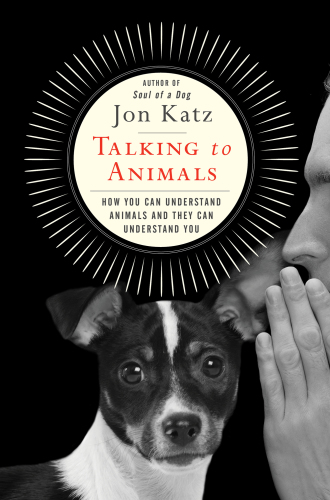
Talking to Animals
How You Can Understand Animals and They Can Understand You
کتاب های مرتبط
- اطلاعات
- نقد و بررسی
- دیدگاه کاربران
نقد و بررسی

December 19, 2016
Bestseller Katz (Saving Simon) fills his latest book with moving essays on what he has learned from different animals. Each story combines biographies of beloved animals with guidance on how humans can better communicate with them, conveying Katz’s message that humans must respect animals for what they are before real connections can be made. To begin a successful relationship, Katz urges readers to “consistently imagine and visualize the behavior seek from dog, and over time, the dog senses it, understands it, and then internalizes it.” Katz’s visualization process, based on the work by animal behaviorist Temple Grandin on how animals perceive the world, comes across as thought-sharing with animals. When Katz has to choose whether to permanently confine Orson, a border collie, or put him down, the communication between the two—and a visualization of Orson by a stream—allows Katz to release Orson. Katz is most successful when relating the sometimes heartbreaking stories of animals or urging readers to consider how animals perceive the world; he’s less skilled at providing concrete tools to learn to better interact with the animals in our own lives.

April 15, 2017
Forget about ordering your dog to sit. Instead, breathe, imagine, visualize.We're not in the tough-hided world of Temple Grandin here: Katz (Saving Simon: How a Rescue Donkey Taught Me the Meaning of Compassion, 2015, etc.) is a soft-hearted, warm advocate for animals of all kinds, and he's disinclined to use tried-and-true methods of demand and reward. Of one dog, he writes, "I had no commands to give Rose, no words, but I had images and I painted a sketch in my head of what I wanted to happen." That's about as New Age-y as it gets, but it helps explain why just about every town in America now sports a business for pet psychiatrists and animal communicators. It's when the animals start talking back that things get a little weird, as when said dog supposedly remarked, "I can do it, give me a chance to succeed." A little of this goes a long way, and there's a lot of it--a lot of what Katz calls "sweet noise." Still, the author chronicles many affecting encounters with animals, and it is indisputable that, as Katz observes, animals are disappearing from our lives, "vanishing at a horrific rate." For all the tender moments and divinations of body language--a horse with its head down is not fearful but relaxed--the author is capable of righteous fire. When it comes to Bill de Blasio and the ban on carriage horses in New York, circuses, and such, he gets his dander up: "It has become a popular idea in America, this notion that it is cruel for working animals to work with people, exploitive for animals to uplift or entertain people." It seems a curious mix of purposes to want to talk with bunnies on one hand and draft animals on the other, but it's of a piece with Katz's particular brand of advocacy, which has many supporters. Animal lovers with a bent for the woo-woo will enjoy this well-intended but often cloying book.
COPYRIGHT(2017) Kirkus Reviews, ALL RIGHTS RESERVED.

May 1, 2017
Best-selling author Katz (A Good Dog; Izzy &Lenore; Saving Simon) has written another heartfelt book about his deeply personal relationship with animals. He starts with describing his childhood growing up poor in an immigrant neighborhood, being bullied, and experiencing a quarrelsome and abusive family life. His stories about the dogs he encountered in particular will have readers relating to the emotional bonds that develop between human and animal. Katz goes on to discusses attachment theory--the study of the dynamics of long-term relationships and feelings in human beings--and applies this to our relationships with our pets, suggesting that intimate interactions with dogs replay early human emotional development. He states that people generally treat dogs and other pets in one of two ways: the way they were treated as small children, or the way they wish they had been treated. VERDICT Katz has a long and sincere involvement with understanding the human/animal bond; his title is recommended for general audiences. [See Prepub Alert, 11/21/16.]--Edell Marie Schaefer, Brookfield P.L., WI
Copyright 2017 Library Journal, LLC Used with permission.

























دیدگاه کاربران